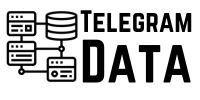PHP will access memory, and not count the character as a byte. JavaScript. Works with UTF-16 encoding. Complex characters require two code points to reference. MySQL. The database management system does not support UTF-8 in its standard form. MySQL does not have enough 24 bits to represent one character. The DBMS supports an extend version of the encoding – UTF-8mb4. Maximum potential UTF-8 can be us to write code of any length. However, to ensure that the algorithm is efficient and reliable, it is better to limit the code size.
Unicode 6.x is the current standard
An assumes the use of code up to four bytes in UTF-8. Comparison of UTF-8 and UTF-16 UTF-8 and UTF-16 are the two most widely us encodings chinese australia in the Unicode standard. They both have variable encoding length. One character in them can be represent by a different number of bytes. In Unicode, all data is stor in a table and sort by the number of bytes they have in the binary system. At the beginning of the standard, characters can take up only 1 byte, so UTF-8 will encode them using 1 byte.
If the data requires two bytes, then in UTF-8 they will weigh two bytes
UTF-8 encodes a character into a binary strengthening the relationship string of one to four bytes. Thus, one byte is enough to encrypt Latin characters, and two for Cyrillic. For these languages, the maximum potential of UTF-8 is enough. UTF-16 operates on data of two and four bytes. The encoding is suitable for Eastern languages.
Conclusion UTF-8 is the most common encoding method
On the Web because it can store text material data containing any character. It can translate characters contain in the Unicode library into bytes and then reverse the process. Many companies that work for their name do this. Even if you have never been to the Apple or Gucci websites, it will not be difficult to find them in a search.

